External and internal parasites cost the horse industry billions of dollars annually. In this blog we will focus on external parasites such as flies. Flies are not just an annoyance to us, but even more so to our horses. Not only do flies make our horses uncomfortable but they can also lead to health problems.
House Fly
Probably the most commonly known and most prevalent fly is the house fly. House flies irritate horses by feed on their muzzle, eyes, and open wounds. They do not take blood meal, therefore are not vectors of blood borne diseases. However, they are able to spread diseases mechanically by transporting bacteria and virus from their bodies. Manure, organic waste, and garbage are the preferred egg laying sites. House flies are grey to black with four dark stripes on their thorax. An adult female can lay 75-100 eggs at a time and can complete their life cycle is as little as five days. Controlling their breeding sites, such as manure is vital in reducing house fly populations on your farm.
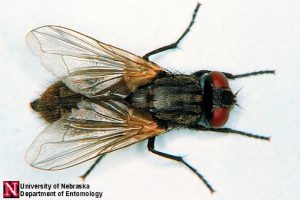

Stable Fly
The stable fly looks similar to the house fly, except they have a distinctive bayonet-like mouthpiece that allows them to bite. Since they do take blood meals, severe cases can result in excessive blood loss and bite wounds can develop infections. These flies can transmit anthrax, equine infectious anemia, anaplasmosis, and Habronema stomach worms.They breed in soggy hay, grain, feed, piles of grass clippings, and manure mixed with hay. They only visit the horse to feed, spending 80% of their time away from the host. Stable flies will even bite humans if desirable hosts are not available. They have several circular spots on their abdomens. A sign that your horse is suffering from stable flies is the distinct stomping of the legs. Riding your farm of moist, stable fly breeding sites is the best cultural control measure. The use of insecticides, repellents, and traps are also options.
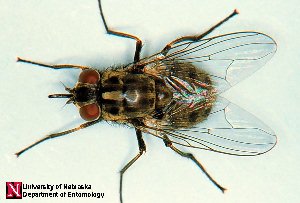
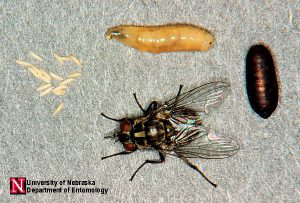
Horse Fly
Horse, deer, and yellow flies all belong to the Tabanidae family. The horse fly is the dreaded pests that can quickly ruin a peaceful trial ride. Their painful bites and frequent attacks are what cause horses to become frenzied. These flies release an anticoagulant into the bite wound causing the blood to drip for up to eight hours. These wounds can lead themselves for secondary invasion of screw worms. As with the stable fly they are also transmitters of anthrax, anaplasmosis, equine infectious anemia, and additionally tularemia. The horse fly is semi aquatic during the immature stages and lay their eggs in moist locations such as mud, leaf mold, and rotting logs.
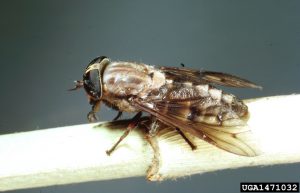
Horn Fly
Where there are cattle, there are horn flies. Their breeding only occurs in cattle manure. Breeding and laying their eggs is the only time they leave the host. They feed on the horse’s muzzle, eyes, and open wounds causing irritation. They are a smaller sized fly and will gather in a particular spot on the horse as a group. There can be as many as 65 flies per animal.

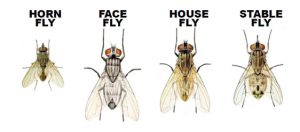
Control
While the use of insecticides is an efficient option for general fly control, manure management is most important when battling these external parasites. Keeping your manure away from your barn and horses is a great start, but flies are able to travel from miles away. Composting your horse manure has many benefits including the reduction of fly populations. This is possible because the composted manure reaches temperatures high enough to kill fly eggs and larvae.
 0
0
